In the woods of Southern Oregon off a dirt road and across a valley from the winding I-5 was a fencing salle d’armes built by Charlie Selberg in an old barn. It was stuffed to the rafters with fencing memorabilia dating back decades. I fenced there a couple of times, stopping in to see Charlie and Julie on my way north or south. For all that it was a run down old barn on the outside – well, to tell the truth, it was run down on the inside, too – it was decorated in a way that I always found transformational. I suppose some might have considered it to be a bit claustrophobic. There was very little uncovered wall space. For me though, instead of feeling oppressive, it was like a treasure house. Finding photos of people I knew, people I didn’t, or fencers and masters I knew of, but never met, was like the best game of hide and seek ever.
Clutter? Or condensed history? And yes, that machine still works. It might give you a little more of a jolt if you’re wearing a sweaty lamé than a new one would, but maybe it’s just trying to teach you something. Keep in mind, everything on the wall below the sword rack is stapled to the wall. Stapled. To the wall. I still have nightmares.
There were two strips in the salle, both much too short for regulation, and the ceiling rafters were low. It kept you honest in foil and epee, but I would imagine a sabre bout could start raining down bits of memorabilia. The building itself wasn’t necessarily constructed to last. The slab was poured over a base of felled pine trees, lined up and covered with cement. A wood floor over this gave it better footing of course. I think Charlie added the wood floor. Oddly, as the years went on, the outside edge of the concrete slab on one side began to sink, giving a decided outward slope to half of the strip on that side. Why it didn’t open up gaps in the floor boards I couldn’t say, but it didn’t. It just slowly sank.
The downslope is on the right in this photo. I would guess, but I don’t know, that Charlie only ever painted the floor once. It had a nice texture to look at. When put to use for its intended purpose, it could kick up a sliver that would stick in your shoe. Barefoot fencing really not advised.
There were overhead reels on both strips, each making use of a really old scoring machine. Two bouts fencing at once could get pretty tight. With the strips so close together getting whacked by someone fencing next to you, rather than across from, wasn’t out of the ordinary. On the side of the room opposite the wall seen above there was room for chairs. You could sit there if there was only one pair of fencers up on the strip, and they’d be on the side seen here so that no one would lose an eye.
Another feature that kept fencing to only one strip can be inferred from this photo. Charlie had a pool table that took up a good portion of the room when in use. It would get pushed into the corner with the bookcase if fencing needed to happen. This picture is a nice sampling of the wall, featuring Hans Halberstadt, George Piller, Italo Santelli, Helene Mayer and Alfred Geller, among many others. The large framed item with 8 pictures in it (with Lucien Gaudin in the middle) are images taken out of a book. Many of the rest are original photo prints. Santelli, Geller and Helene Mayer are exceptions.
More wall, more swords, more masks. The framed Mr. Natural comic is a reference to the unofficial mascot of the UCSC fencing team. Officially, the University of California Santa Cruz’s mascot is the Banana Slug, or Ariolimax Californicus. However, the fencers on the team wore a Mr. Natural patch on their sleeves.
The oval frame sports a collage of photos of fencers from Charlie’s UCSC teams. I believe I can name just about everyone in this group of photos, since most of them had a hand in my early development as a fencer. You might notice the picture on the far left, in the middle, has no frame. That’s because it’s stapled to the wall. Stapled. To the wall. I can’t even.
The first time I visited was in spring after a wet winter and the back of Charlie’s property was overgrown with tall weeds that grew over our heads. He wanted to show off his pond, but to get to it you had to wade through these weeds. I remember following along behind him, wondering just where he was leading us and how far we were going in these conditions. He looked over his shoulder, looked in my face, then broke out into a huge grin and laughed that very Charlie laugh. I suppose I must have looked like a lamb being led to slaughter. But the pond wasn’t really all that far away. Slept on the hard floor of the salle that night. I was younger then.
Some examples of the various broken trophies that dotted the landscape. Very few of these escaped catastrophic damage.
I mentioned the rafters. They were no less cluttered than the rest of the space. If there was wall space showing, it wasn’t due to lack of desire to cover it.
Charlie’s collection was a combination of his personal memorabilia and gifts that others would bestow upon him. Or things he picked up along the way. He certainly didn’t attend either the ’68 Olympics or the ’77 World University Games. People would find things related to fencing and gift them to Charlie. Almost everything found its way to the walls.
As Charlie and Julie got older, they eventually reached a point where they couldn’t maintain the menagerie of dogs and cats that had once roamed freely on the property. In their absence, rodents of various shapes and sizes began to encroach upon the salle. From the small ones, mice, to the larger, possums and racoons, all of them claimed space. They left behind evidence on a variety of scales, some of which we discovered to our horror when dismantling the salle for its resurrection. It’s been completely rebuilt on essentially the same footprint with a few additions, and without the rodent highways.
Here’s a small example of the damage caused by the smaller scale rodents. Mice have chewed on the corners of the Northridge Pacific Coast Championships poster and also a little bit of Mr. Natural. And whatever you do, don’t put your foot in the shoes without checking for nests. I wish I were joking. The masks, either on the lower racks or in the rafters, were very popular with the mice.
Taking several decades of memorabilia off these walls so that reconstruction could begin was quite a task. It was just Mark Headley and myself. He worked mostly on the books while I boxed up framed pictures and swore vengeance on the inventor of the staple gun as I very carefully removed rusty staples from chewed up and mouse-pee-stained original photos.
Staples, staples and more staples. Photographs, posters, magazine clippings. If there was space, they went on the wall.
It took Mark and I three days to clear the place. Everything went from here into a rented van. Boxes of framed photos, others filled with notebooks containing mylar sleeves & backing boards into which I’d put each individual photo, as carefully as possible. As you can see from the photo just above, some pictures had curled or had ragged edges that defied my attempt to slip them into a protective bag. Some of the newsprints were incredibly delicate and would tear if you breathed hard near them. With the pervasive smell of mouse pee (and worse), we mostly refrained from breathing. Both of us had to take frequent breaks to get some fresh air. I suspect we were fortunate to not come down with some horrible wasting disease from what we were dealing with. And don’t think Mark got off lucky by dealing with the books. At one point, he held up for my inspection a book that had been eaten from the pages inward, leaving only the hardbound covers, the spine and the chewed nubbins of the inch or two of what remained of the pages. The back of the bookcases weren’t flush to the wall, leaving a little mouse path from which the little fuzzballs could choose which book would be the meal of the day.
Julie Selberg’s medal boards and some photos from her fencing career. Bottom left is her scoring with a lunge and the four pictures framed together were taken at the 1964 Olympic Trials, held at the New York World’s Fair. She made the finals; a round-robin pool of ten. The 1964 World’s Fair was where the Disney Imagineers unleashed It’s A Small World, Great Moments with Mr. Lincoln and the dinosaur dioramas you can still see from the Disneyland train as you travel through the primeval world. I hope the fencers took in the sites in between events.
Besides the photos, prints and posters, we also loaded up the swords, masks and miscellanea that were to be found, including a number of the medal boards like Julie’s above. Julie’s two boards are inch thick oak planks and they display the fruits of her competitive efforts. I don’t know that they’re divided between her foil exploits (upper) and sabre (below), but it’s entirely possible. Julie was a pretty fair sabre fencer and ahead of her time as a woman in that event. The Central Cal division held a few women’s sabre events every year if I remember correctly, and Julie would come down from her and Charlie’s home in Bonny Doon to compete at those. This was all long before Women’s Sabre was a sanctioned event. You know – the Ancient Times. I didn’t start fencing until 1977, so I don’t think I ever saw Julie with a foil in her hand. Any time I saw her fencing, it was with a sabre.
Trophies, weapons and photos. What’s not to love about this? There’s a whole lot of history here. Just a few of the more recognizable folks – and I’ll let you find them yourself – include Aldo Nadi, multiples of George Piller, Hans Halberstadt, Gerard Biagini, George Domolky, Skip Shurtz, Maxine Mitchell, Arthur Lane, Jack Nottingham, Michael D’Asaro, Carlos Fuertes, John McDougall, three from the Castello family, Jack Baker, Heizaburo Okawa and Zoltan Somogyi. Ready? Go!
I suppose I’ve played heavily on the dark side of taking down this collection of memorabilia, but I’d do it again in a heartbeat. Mark, who’s responsibility it was to figure out what to do with all this stuff, was at a bit of a loss until I pitched him the idea of using it as the basis for creating a West Coast Fencing Archive, which is exactly what we did. We brought the material back to Berkeley and I began the task of sorting, identifying, scanning, and doing my best to keep all this material safe. Mark had the space to house the collection at the West Berkeley Fencing Club that he founded, and since 2012, I’ve been finding out more and more about what we’ve got. Some of the pictures still defy my attempts to identify the subjects, but I know way more now than I did when I started. As we got the word out, more and more material has come our way. It seems like every time something new is added, it fills in a puzzle piece, revealing new information. Invariably these things also uncover new areas for discovery. The more history that comes my way, the more I realize how much there is still to learn. I’ll keep sharing. But it all started here.


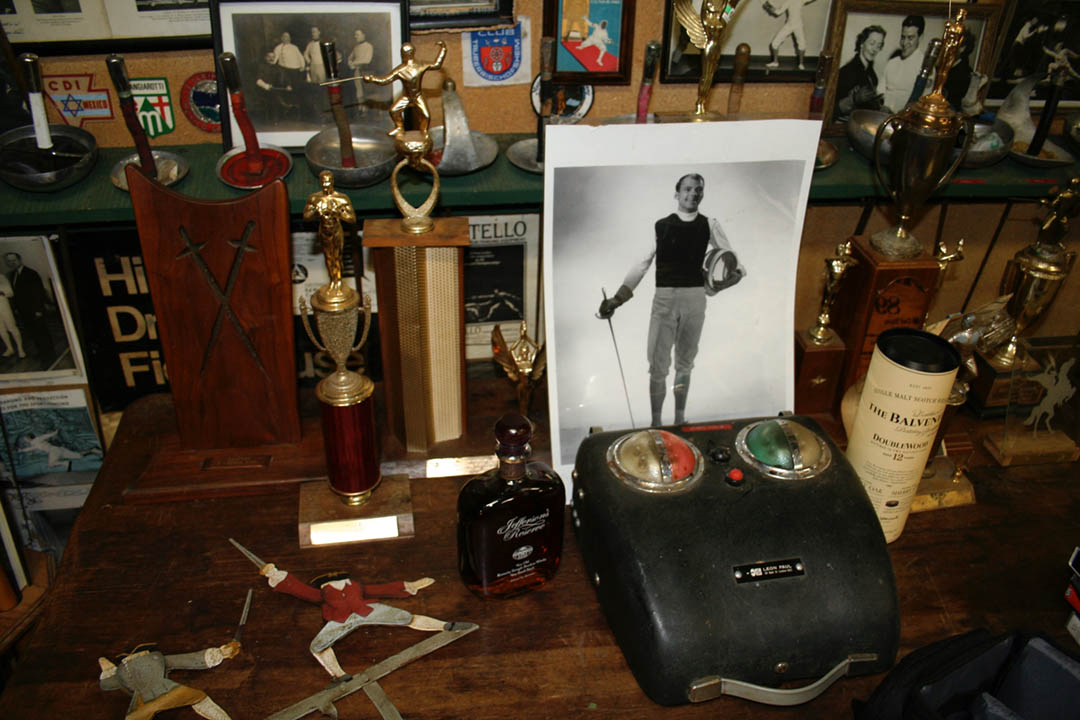
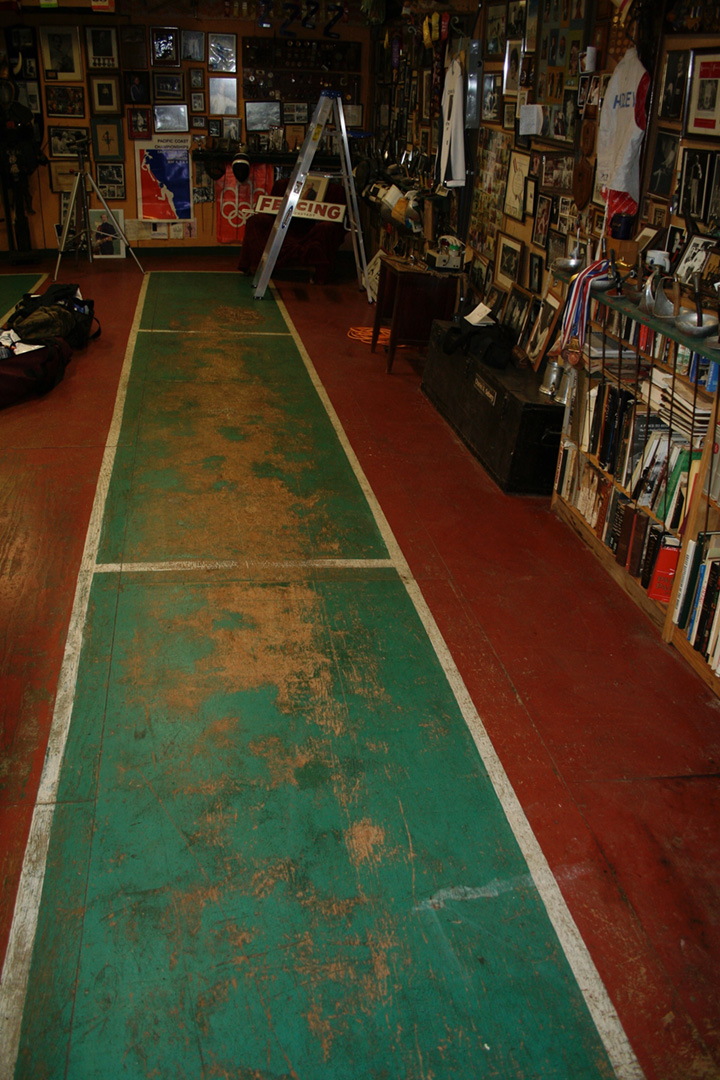
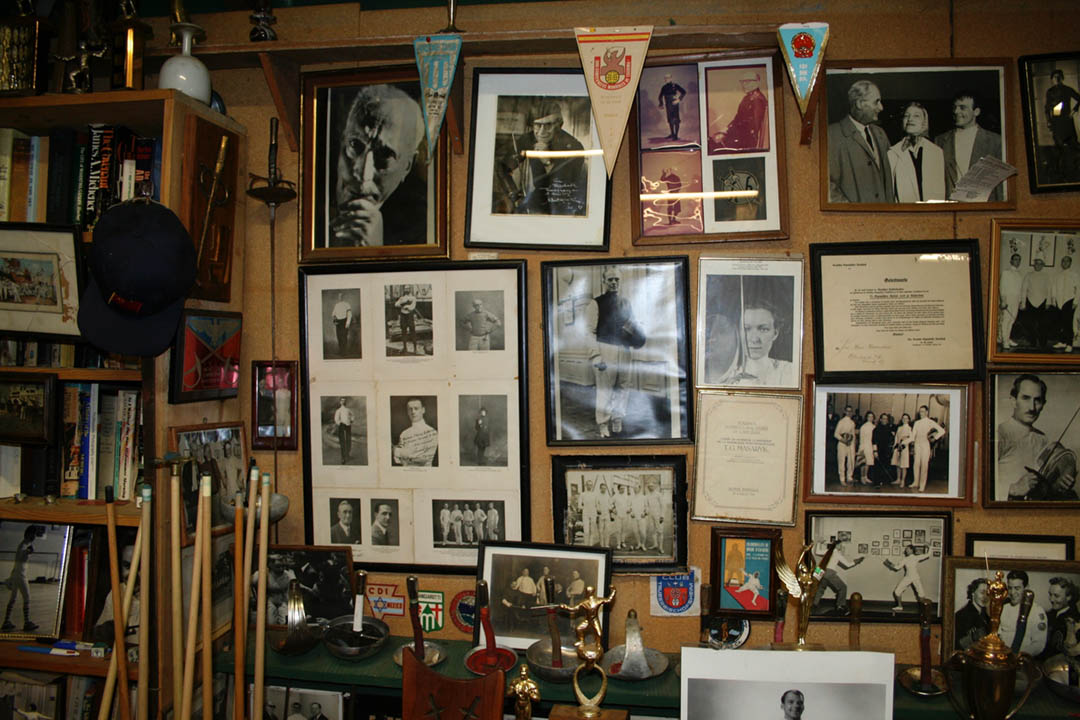
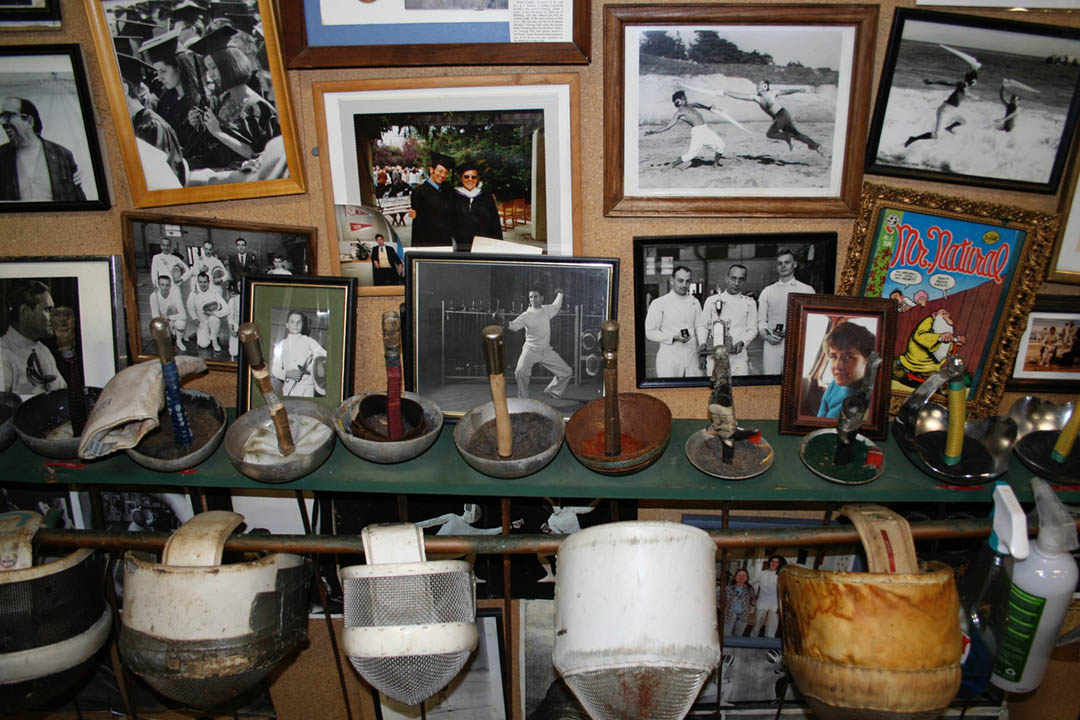
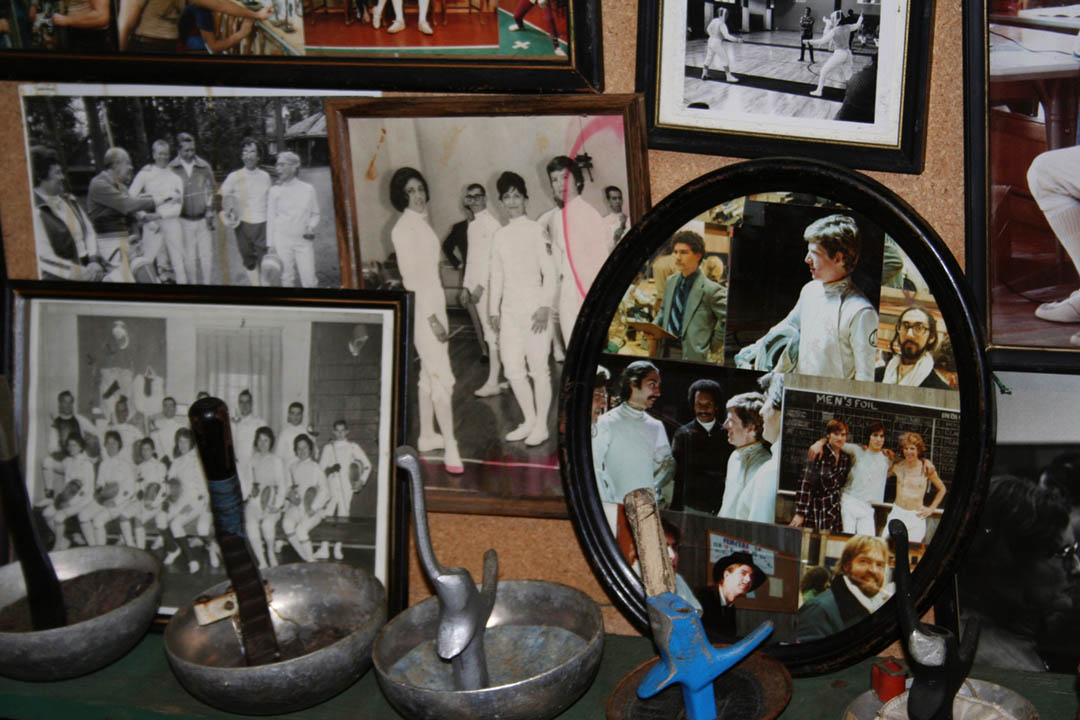
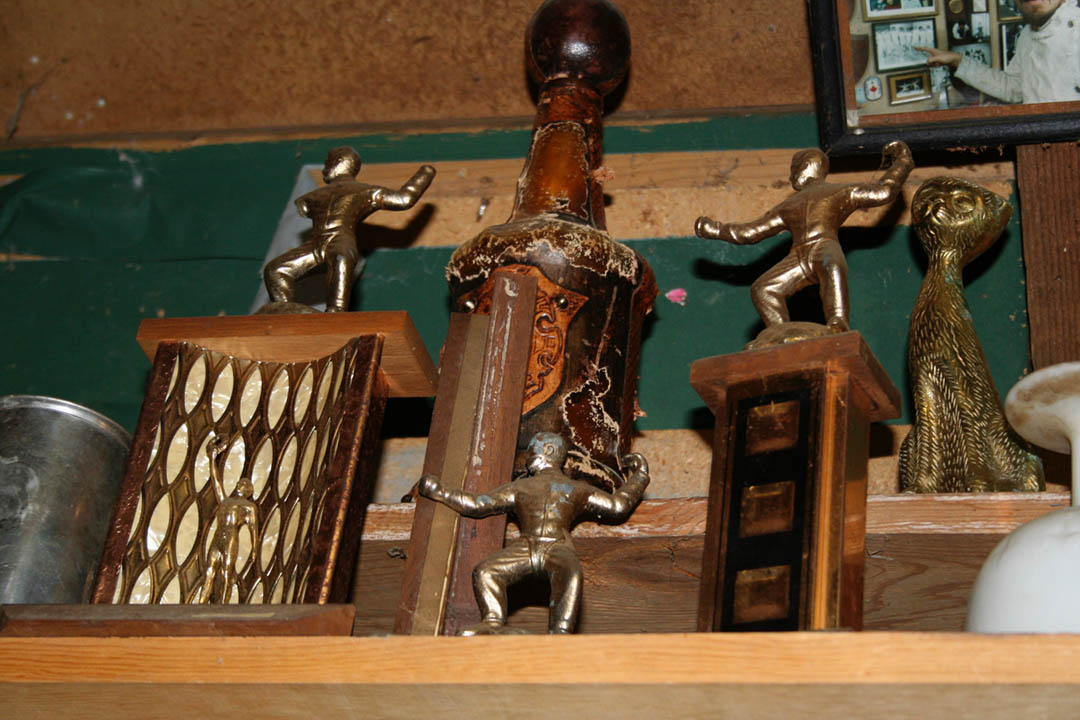
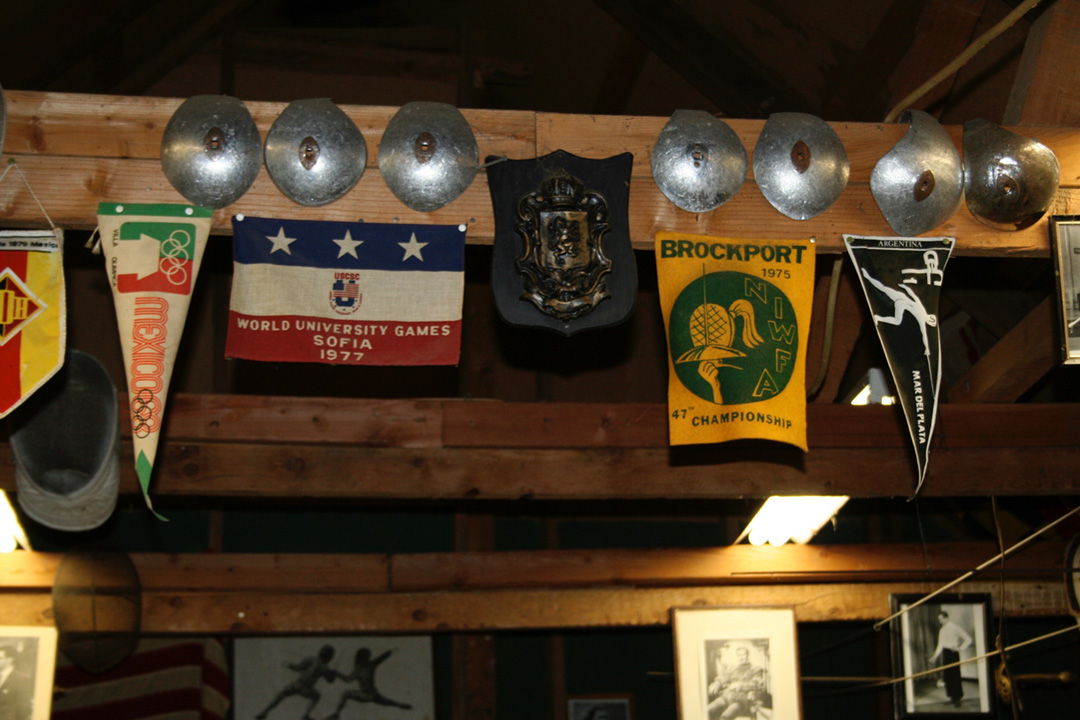
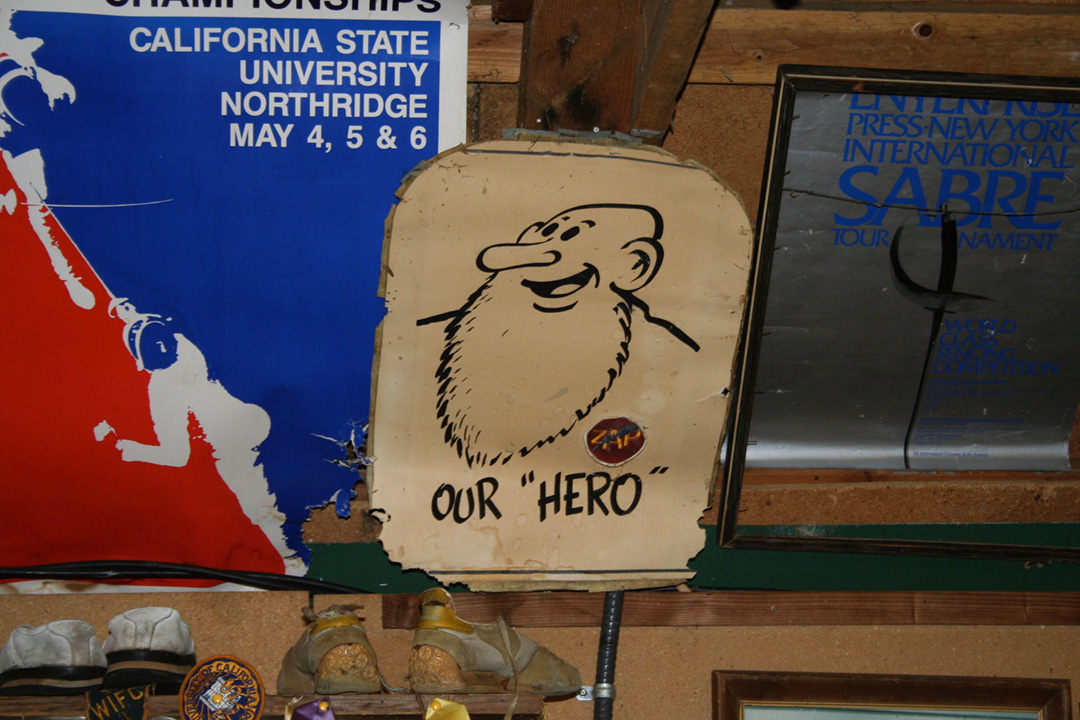
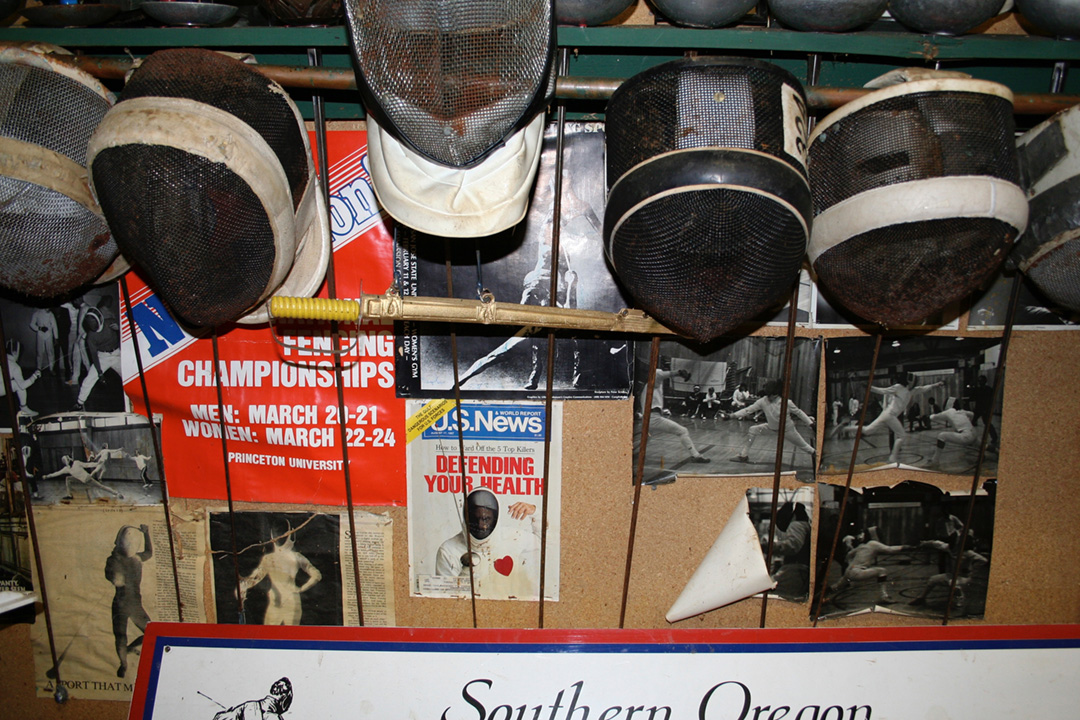
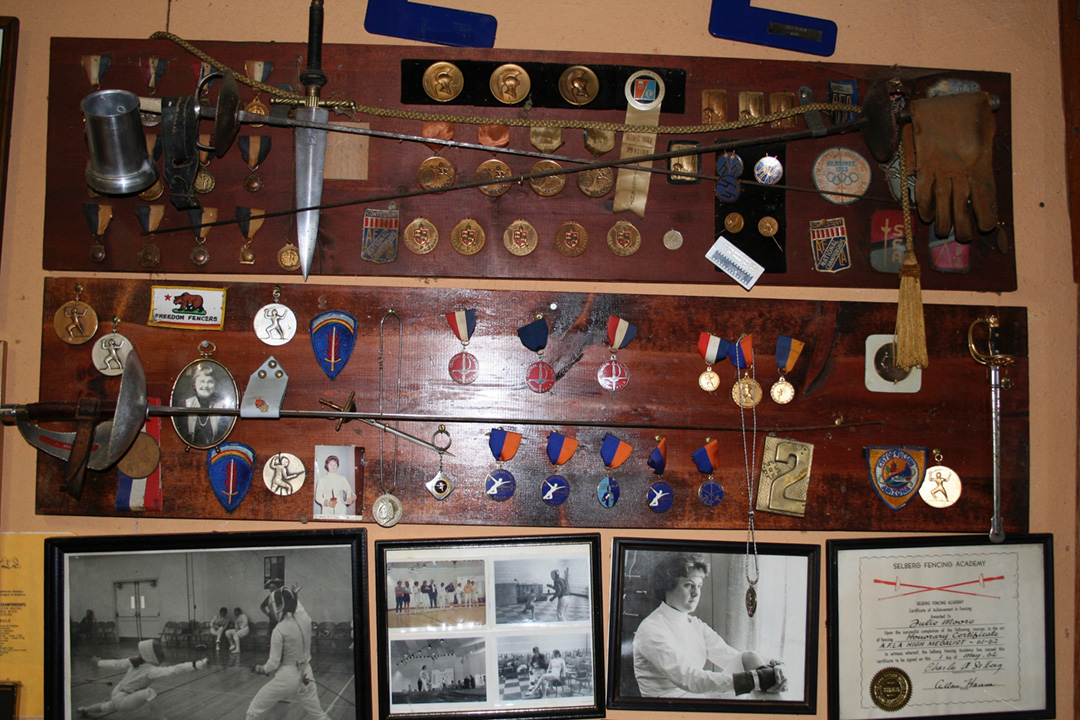

Wow! How generous of you to preserve this archive and begin it to breathe life into the history of West Coast fencing. Brought back some highlight memories. Heziburo Okawa had the most beautiful lunge I had ever seen up to that point–it just glided out of nowhere. I was never aware that Italo Santelli had ever been in the US–didn’t see the photos but I’m assuming they were taken here. Thanks again
I’m not sure where Charlie picked up the photo of Italo Santelli. I believe it was copied from a book. The picture, Santelli as an old man, was taken in Budapest not too long before his death in 1945. My guess is that Charlie – or John McDougall – took a photograph of the book page and made an enlarged print from the negative.
Julie Selberg’s opponent at the 1964 Olympic Trials may have been me. Couldn’t tell for sure but it is a lefty of about the right height. I won those trials sporting a temperature of 102 but what made the event memorable was that I was knocked into semiconsciousness by a Jan Romary uppercut on the infighting and my mother, who was in the audience (event was held on a large stage), let out a huge scream that, I’m told, mesmerized the entire auditorium.. Wish I’d been aware enough to appreciate it
What ever happened to the barn full of
Charles’ oil paintings?
Thanks for all of this Doug! Arthur Lane was my Maestro. I took lessons from him back in the 70’s, 80’s, and 90’s. Also, Mark and I crossed paths in competition a number of times too. Wonderful article! Thanks for all that you do!!